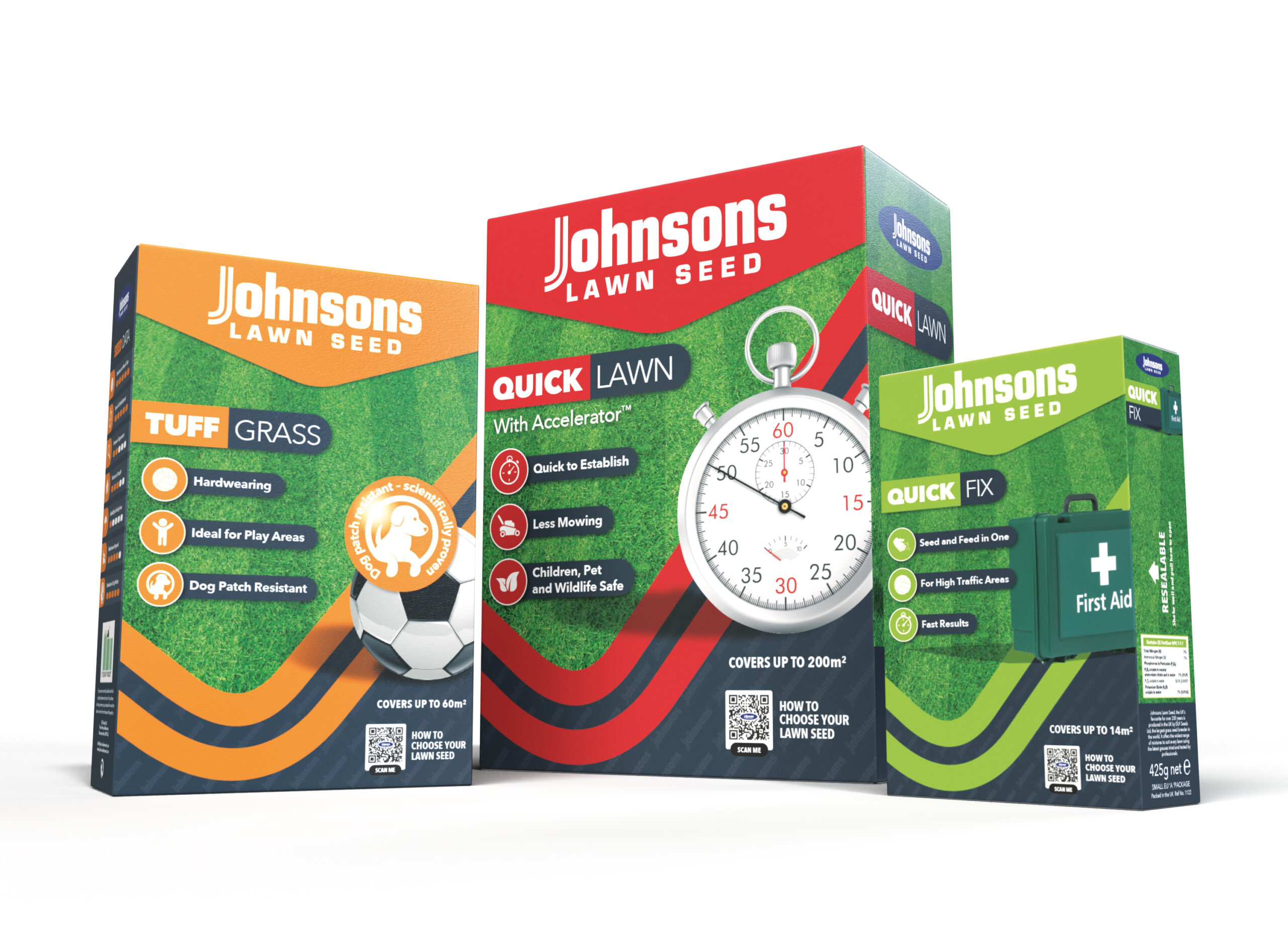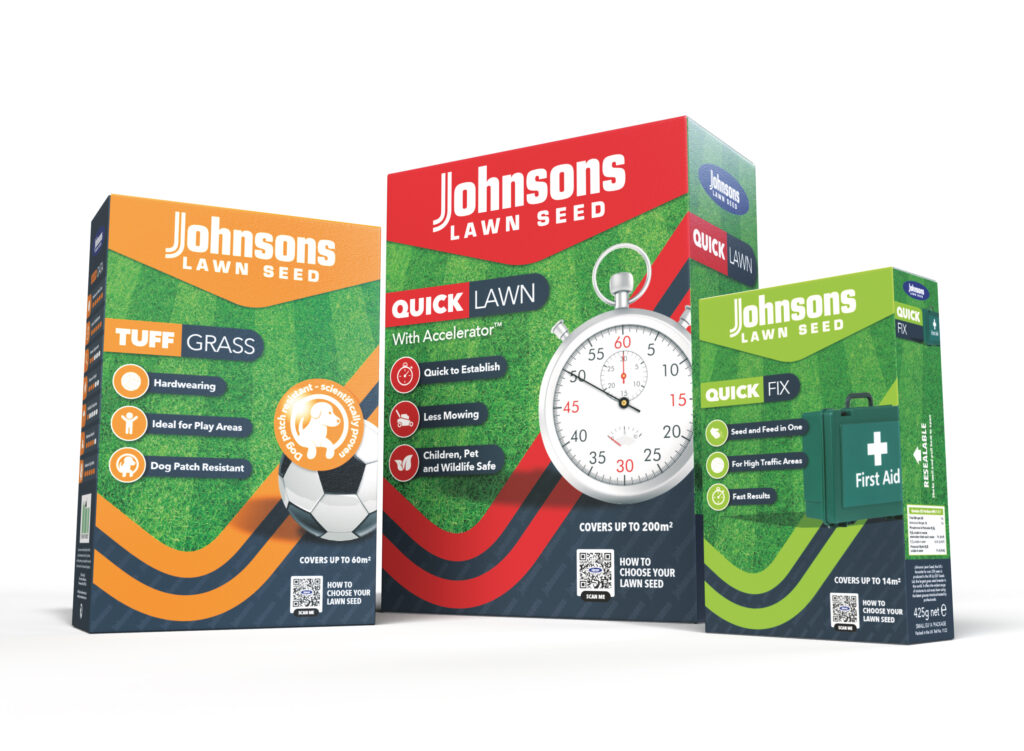 Looking to have an emerald lawn but don’t know where to start? Whether you are patching your existing lawn or sowing new grass, the seed you use, the time of year you seed, and weather conditions all play a part in creating the perfect garden. You may hear the terms “sowing” and “overseeding” and don’t know what they mean but fear not, Johnsons Lawn Seed has put together some expert advice to ensure you grow your best lawn yet!
Looking to have an emerald lawn but don’t know where to start? Whether you are patching your existing lawn or sowing new grass, the seed you use, the time of year you seed, and weather conditions all play a part in creating the perfect garden. You may hear the terms “sowing” and “overseeding” and don’t know what they mean but fear not, Johnsons Lawn Seed has put together some expert advice to ensure you grow your best lawn yet!
As the longer days start to roll in and you look forward to the summer when you can enjoy your garden to the full, your lawn will need rejuvenating and may need some TLC following the winter months. To keep your lawn looking thick and full, new lawn seed needs to be sown to replace the older grass or those that have died during the colder temperatures.
Lawn renovation should be done in Spring or late Summer to early Autumn depending upon the weather conditions. Here are some handy tips and tricks on sowing and overseeding to revive your lawn ready for a hazy summer.
Preparation
Johnsons recommend that you measure your lawn to ensure you purchase enough seed for your area. For a circular lawn, measure the diameter of the area at its widest point and for triangular lawns, measure from the middle of the base to the tip of the triangle. When you decide to sow, it’s best to pick a day that’s not too windy and preferably after a period of rainfall.
Remove any debris from the surface of the lawn and use a spring tine rake or a leaf rake, rake in different directions to remove and break up layers of dead matted grass or thatch. These must be removed from your lawn as they compete with the healthy grass for vital nutrients and soil moisture, which are vital in the hotter weather to prevent the shallow roots suffer lasting damage. This process is known as scarifying and loosens the soil and aerates the lawn roots. The earlier you scarify, the better – if the temperatures are between 15°c and 20°c ideally.
You may notice that areas of your lawn will have experienced heavy footfall over the course of the previous year and become waterlogged due to the wet, winter weather. This causes the soil to become compacted which can cause problems with drainage, weeds, and moss. This can be resolved by aeration, a simple process of perforating the soil with a garden fork to create small holes in your lawn to allow air, water, and nutrients to penetrate the grass roots. Spike ground with a hollow tine fork, a normal fork can be used, up to a depth of 15cm (6in) to de-compact the soil.
Seeding
Before you start to sow seed, top dress the lawn with a good quality topsoil, making sure the dressing fills the holes created when aerating. This allows water, air, and nutrients to penetrate deeper into the soil and will result in deeper rooting, and dense grass growth.
It is a good idea to apply some lawn fertiliser before sowing and seeding your lawn, Johnsons Lawn Thickener and Johnsons Quick Fix already have fertiliser either coated on the seed or mixed with the seed making them ideal for this task. Scatter the mixture evenly over the lawn surface using the recommended rate on the pack and rake in to ensure even distribution and coverage.
When applying Johnson’s Lawn Seed, you should aim to oversow it at the rate specified on the pack. This is usually 25 grams per square metre. When applying Johnson’s Lawn Seed, you should aim to oversow it at the rate specified on the pack. You can estimate the quantity of seed you will need by multiplying the square metre area of your lawn by the sowing rate.
Seed can be applied directly from the package or mixed with some topsoil to make sowing easier. You may want to measure out, for example, 4 square metres as a trial run. To calculate the correct amount of seed, weigh out 100g at a rate of 25g per square metre. Then scatter evenly up and down, left to right, for a distance of one metre. This method can be applied to the entire area. The correct amount of seed will be used and a more even distribution will be achieved.
Once the lawn seed has been sown, lightly rake the area before lightly rolling or treading in to help the seed take. This is crucial because it ensures that the seed has good soil contact, which will aid in its germination and establishment. If at all possible, stay away from the newly overseeded area to give the vulnerable young shoots time to strengthen and aid in establishment.
Although it is a good idea to keep the area damp as you sow, wait to water it until the seed has been firmly planted or it will stick to your roller and shoes! To maintain the seedbed consistently moist, water liberally with a fine spray, ideally in the evening, if dry weather occurs after overseeding.
Cut the grass for the first time when it is 5-8 cm (2-3 in) high. For mixtures with ryegrass, trim lightly and gradually decrease your blades to an ideal cutting height of between 50mm (2in) and 25mm (1in), or 25mm (1in) to 13mm (12in) for mixtures without ryegrass. Regularly cut the grass but try not to cut more than one-third of the growth at once. The current grass may need to be chopped before the new growth. You can accomplish this by raising the cut to a level that only removes the old grass while leaving the new uncut throughout the ensuing weeks.
Find out more
Whether you want fast-growing grass seed, a luxury lawn, a hard-wearing lawn for children and pets or a lawn that will grow in the shade, Johnsons Lawn Seed can help grow the lawn that suits your needs. To see the different range of seed mixes, please visit the website at:
http://www.johnsonslawnseed.com/product-range.aspx
ENDS
Words: 1010
For more information, interviews, or images please contact:
Kimberley Hornby Tel: 07851 610573 Email: kimberley@hornbywhitefootpr.co.uk
Cassie King Tel: 07875 337290 Email: cassie@hornbywhitefootpr.co.uk
Notes for editors:
Established in 1820, Johnsons Lawn Seed is the oldest lawn seed brand in the UK with a long and prestigious record of product innovation and grass breeding. DLF – Johnsons Lawn Seed’s parent company – dedicates a huge part of its business to research and development. All products have been developed as part of a 15-year breeding and R&D programme. As a result, gardeners can rest assured that every single seed that fills its boxes has been carefully researched, evolved, and selected to create the perfect lawn.

